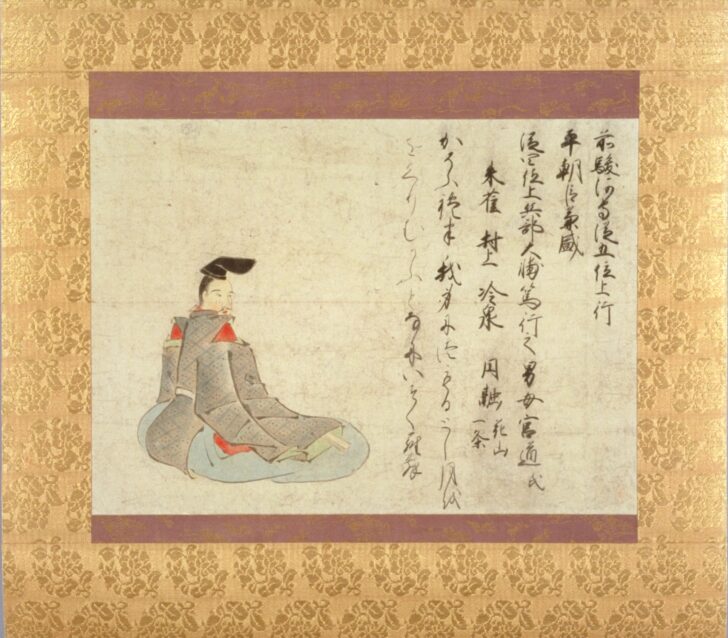Thirty-six Immortal Poets: Taira no Kanemori
Madenokôji Fujifusa

Description
This elegant portrait of Taira no Kanemori, a court poet of the Heian period (794–1185), was originally part of a handscroll depicting thirty-six celebrated Japanese poets. Each portrait was accompanied by a brief biography and a representative poem. Here, Kanemori’s court title and name appear on the right, followed by his poem in running script. The care and attention lavished on this work speaks to the status of poets in Japanese society. Kanemori is depicted in formal Heian period court attire, a style still worn by the current Emperor of Japan when he presides over Shintō (an indigenous Japanese religion) ceremonies.
Subject Matter:
The grouping of thirty-six celebrated Japanese poets known as the Thirty-six Immortals of Poetry, "Sanjuroku Kasen", was formed by Fujiwara no Kinto (966-1041) for his anthology of selected poems called "Sanjurokunin-sen." The poets that were included in this anthology were subsequently portrayed with their poems in paintings known as "Sanjurokkasen-e." Originally, these individual portraits were placed in sequence in a handscroll, but they have all been cut into sections and mounted as hanging scrolls. Beside each poet's portrait, a brief biography and a representative poem were inscribed. The earliest literary record of portraits of the thirty-six poets dates to the end of the Heian period in the late 12th century; the earliest extant examples, however, are from the Kamakura period (1185-1333).
One of the 36 poets, Taira no Kanemori (? - 990) was active at the Heian court.
Physical Description:
A male figure is sitting sideways, his face looking toward the front right. He wears a long black cap, a red under-kimono, a grayish-color jacket with geometric patterns, and right gray color pantaloons. He holds a fan, which is peeking from the right sleeve. The painting is accompanied by calligraphy on the right side of the figure. The painting is mounted on gold brocade with strips of purple and gold brocade on top and bottom of the painting.
Usage Rights:
If you are interested in using an image for a publication, please visit https://umma.umich.edu/request-image/ for more information and to fill out the online Image Rights and Reproductions Request Form.